5 Common Irrigation Problems AI Solves
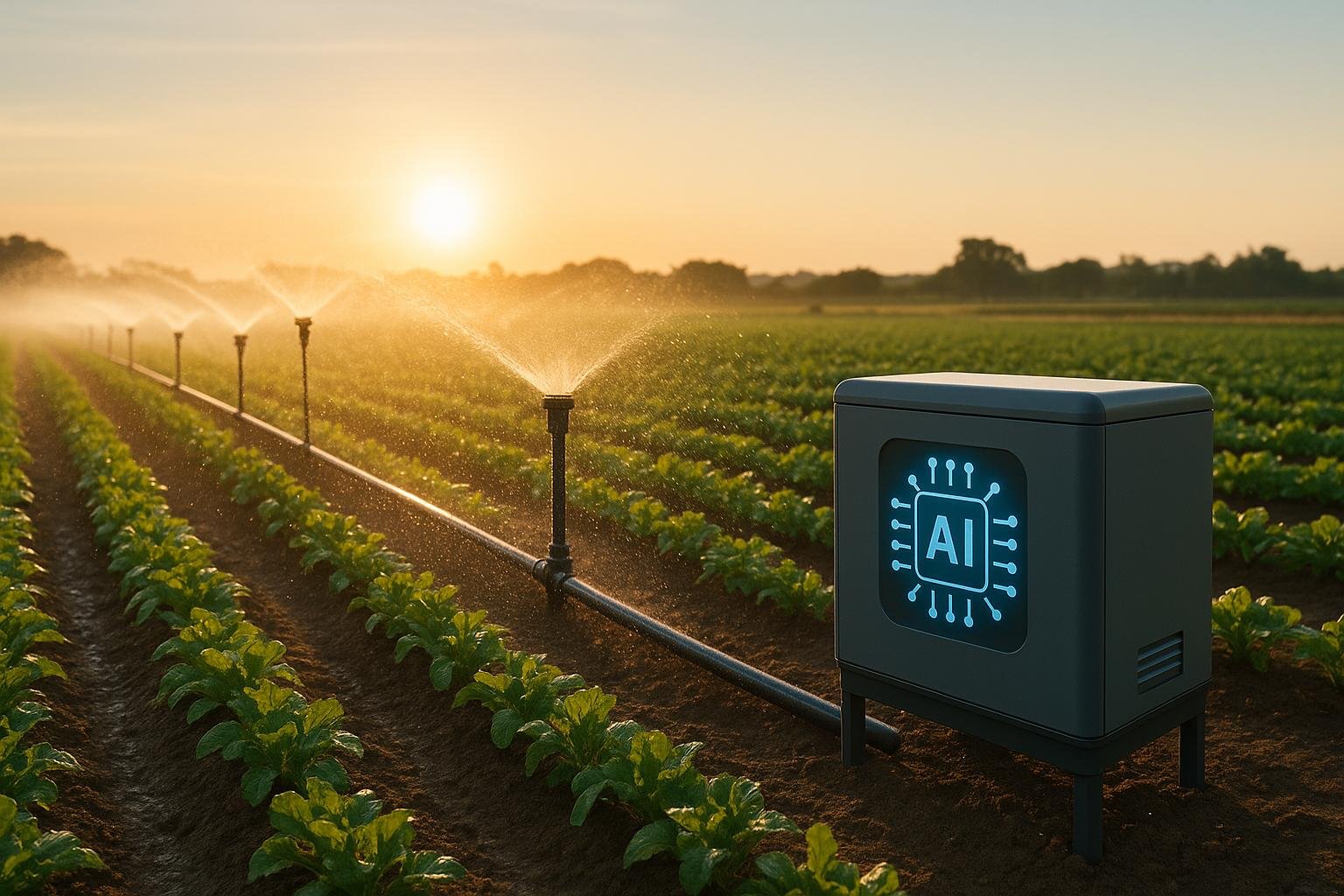
AI-powered irrigation systems are solving five major problems that waste water, increase costs, and harm plant health. Here's a quick breakdown of how AI addresses these issues:
- Overwatering and Underwatering: AI uses soil moisture sensors and weather data to water only when needed, reducing waste by up to 50%.
- Uneven Water Distribution: AI customizes watering for different zones based on soil type, sunlight, and other factors, achieving up to 90% uniformity.
- Water Waste and Runoff: By integrating weather forecasts, AI prevents over-irrigation, saving 30–50% of water and reducing pollution.
- High Operating Costs: Automation lowers labor, energy, and maintenance expenses by optimizing system performance and detecting leaks early.
- Poor Response to Weather Changes: AI adjusts watering in real-time based on sudden rain, heatwaves, or seasonal shifts, ensuring plants stay healthy.
AI systems combine data from sensors, forecasts, and plant models to create efficient, precise irrigation plans. This technology not only saves water but also improves plant growth and reduces costs for homeowners and farmers alike.
The Future of Irrigation How AI Saves Water & Grows Crops

Problem 1: Overwatering and Underwatering
Getting the watering balance right is one of the biggest hurdles for gardeners and landscapers in the U.S. Overwatering alone is responsible for killing about 80% of plants [4], while underwatering brings its own challenges, often ruining even the most carefully designed landscapes.
The effects of improper watering often run deeper than people expect. Overwatering, for instance, pushes oxygen out of the soil, leading to hypoxia. This condition stunts root growth and can even mimic the symptoms of underwatering [3]. In fact, plants surrounded by overly wet soil may wilt because their damaged roots can no longer transport water effectively [3].
Signs of Overwatering vs. Underwatering
Overwatering typically shows up as yellowing leaves, wilting despite moist soil, root rot, mold on the soil surface, or brown tips on leaves. On the other hand, underwatered plants may have stunted growth, dry soil pulling away from the edges of containers, and leaves that turn crispy or fall off prematurely.
The challenge is that traditional irrigation systems often rely on fixed schedules, ignoring real-time factors like recent rainfall or actual soil moisture levels.
How AI Prevents Overwatering
AI-powered irrigation systems are changing the game by using sensors placed at the root zone to constantly monitor soil moisture [1]. If the sensors detect that the soil already has enough water, the system overrides preset schedules, stopping unnecessary watering.
These systems combine data from soil sensors, weather forecasts, and plant-specific models to create precise irrigation plans [6]. This approach prevents the waterlogged conditions that lead to root rot and other issues. For example, smart irrigation systems using AI can save the average U.S. household over 15,000 gallons of water per year [5] by eliminating wasteful watering cycles. In doing so, they not only conserve water but also promote healthier plants by ensuring irrigation happens only when it's actually needed [5].
This level of precision doesn’t just stop overwatering; it also lays the groundwork for addressing water shortages effectively.
How AI Fixes Underwatering
AI systems are equally effective at tackling underwatering by forecasting water needs before plants show signs of stress. These systems analyze real-time environmental factors like temperature, humidity, wind speed, and solar radiation, alongside historical data, to predict the best times to water [8][2].
This proactive approach keeps soil moisture levels consistent, encouraging strong root systems and vigorous plant growth. In fact, AI-driven irrigation can reduce water use by 30–50% while increasing crop productivity by 20–30% compared to traditional methods [7]. For landscapers and property managers, this means healthier plants with better disease resistance, stronger roots, and more even growth patterns.
Problem 2: Uneven Water Distribution
Traditional irrigation systems often struggle to deliver consistent moisture across gardens and lawns. Issues like misaligned sprinkler heads, clogged nozzles, water pressure fluctuations, and leaking pipes are common culprits. For example, a study in Idaho examined 30 wheel line irrigation systems and found that faulty components caused a 26% increase in water usage due to leaks and worn or missing nozzles [11]. Fixing these distribution problems is another way AI can step in to improve irrigation, building on its role in managing over- and underwatering discussed earlier.
Uneven watering creates a cascade of problems. Some areas dry out, leaving plants brown and dying, while others become oversaturated, leading to mud or mold. To compensate for these dry patches, homeowners and landscapers often overwater the entire space, wasting significant amounts of water. This issue becomes even more pressing during summer when outdoor irrigation can account for 50% of household water usage [13].
High-flow sprinkler systems make matters worse by releasing water faster than the soil can absorb, leading to runoff in some areas while leaving others under-watered. Even under ideal conditions, traditional sprinkler systems typically achieve only about 70% efficiency compared to more precise techniques [12].
AI Zone-Based Irrigation
AI offers a smarter solution by treating each part of your garden as a distinct zone with unique watering needs. Instead of applying the same amount of water everywhere, AI systems analyze factors like soil type, sunlight exposure, humidity, and temperature to determine the exact water requirements for each area [1].
These systems rely on data from soil moisture sensors and weather stations to create detailed irrigation maps [1]. The results speak for themselves. On a large farm in Australia, satellite-driven AI analysis identified areas of water stress, cutting irrigation by 25% while improving crop uniformity [2]. The system adjusted for natural drainage on slopes and tailored watering cycles for clay-rich areas that needed slower, longer sessions.
Ted Wodoslawsky from c3controls highlights how AI integrates multiple data sources for smarter irrigation:
"AI leverages data from various sources - such as weather forecasts, soil moisture sensors, and satellite imagery - to make intelligent irrigation decisions. By continuously analyzing data, AI-driven irrigation systems ensure precise water distribution and efficient resource management." [2]
This zone-based approach allows for tailored watering schedules, ensuring that different parts of your garden - like roses, vegetable beds, shaded areas, or sunlit sections - get exactly what they need. With this method, Distribution Uniformity (DU) can reach up to 90%, ensuring nearly every part of your garden is evenly watered [10].
Better Garden Health and Appearance
Consistent watering doesn’t just keep plants healthy - it also makes your garden look better. When each zone gets the right amount of moisture, plants grow stronger roots and develop more predictable growth patterns. Improved DU simplifies irrigation schedules and enhances sensor accuracy [10]. Achieving balanced water distribution is just as important as avoiding over- or underwatering, tying back to the article’s focus on efficient water use.
The benefits go beyond aesthetics. In precision farming, AI technology has been shown to increase crop yields by 20–30% [1], while AI-driven irrigation systems can save 30–50% of water and still boost productivity by 20–30% [7]. For home gardeners, this means greener lawns, more abundant vegetable crops, and flowering plants that bloom more consistently.
In the Netherlands, greenhouse farms using AI-controlled irrigation systems relied on real-time data about humidity and plant transpiration. This approach optimized water distribution and led to a 20% increase in crop yields [2]. By eliminating the guesswork that often causes uneven growth, AI helps plants thrive and reach their full potential.
In short, AI-managed irrigation not only solves the inefficiencies of traditional systems but also delivers healthier, more vibrant gardens with less effort. It’s a win for homeowners and the environment alike, reducing water waste while enhancing property value.
🚀 Ready to Reinvent Your Garden?
Join thousands of homeowners who have transformed their gardens using our AI design tool. Upload one photo to explore endless possibilities.
Get your AI garden designs →Problem 3: Water Waste and Runoff
Traditional irrigation systems are notorious for wasting water, which not only strains natural resources but also drives up costs for users. In the U.S., the widespread use of pesticides and fertilizers in agriculture often leads to runoff, polluting water supplies and damaging aquatic ecosystems [14].
To put the scale of the issue into perspective, agriculture accounts for about 70% of the world's freshwater usage [16]. Poorly designed irrigation systems exacerbate the problem by watering unevenly - some areas get oversaturated while others stay dry. This imbalance leads to extended watering times and, ultimately, more waste. Over-irrigation also washes nutrients and chemicals into storm drains, rivers, and groundwater supplies, contaminating drinking water and harming the environment. Even worse, excessive groundwater extraction for irrigation depletes aquifers, leaving some communities without dependable water sources for decades [15].
Beyond the environmental toll, inefficient irrigation hits homeowners and farmers hard financially. Systems like traditional flood irrigation or poorly timed sprinklers lose significant amounts of water through evaporation and runoff, resulting in soaring summer water bills.
AI Weather Forecast Integration
AI is changing the game for irrigation by using real-time weather data and predictive algorithms to address water waste before it even begins [1]. Unlike fixed-schedule sprinklers, AI systems assess weather forecasts, soil moisture, and atmospheric conditions to determine the precise watering needs. These systems factor in humidity, temperature, wind speed, and rainfall predictions, automatically adjusting irrigation schedules. For instance, sprinklers won't activate during a rainstorm or when the soil already has enough moisture. By anticipating extreme weather or sudden shifts, AI allows for proactive irrigation adjustments to protect crops and conserve water [17].
The results speak for themselves. A vineyard in California implemented an AI-powered irrigation system and cut water use by 35% while maintaining crop quality [2]. In Uttar Pradesh, India, farmers using AI-integrated precision irrigation monitored weather, soil conditions, and crop needs in real time, achieving significant water savings and improved crop yields [17]. These systems also help manage droughts by optimizing water use during dry spells, preparing property owners for water restrictions and safeguarding resources [2]. This forward-thinking approach reduces waste, lowers costs, and ensures sustainable water use.
Cost and Water Savings
The financial perks of AI-driven irrigation go far beyond trimming water bills. Machine learning models can reduce water use by as much as 40% [2], saving homeowners between $80 and $160 annually. These systems typically deliver 30–50% water savings while increasing crop productivity by 20–30% [7]. Plus, they reduce maintenance expenses and add value to properties.
The economic ripple effects are just as compelling. Less runoff means municipal water treatment facilities face lighter loads, cutting pollution cleanup costs. Communities adopting AI-based irrigation can ease pressure on local water supplies, potentially avoiding expensive infrastructure upgrades and water restrictions. Commercial landscaping businesses also gain from these systems by cutting water costs and lowering labor expenses through more efficient irrigation. It's a win-win for the environment and the economy.
sbb-itb-4d6a8dd
Problem 4: High Operating Costs
Traditional irrigation systems often stretch budgets thin due to high labor, energy, and maintenance demands. Workers are tasked with monitoring soil moisture, adjusting sprinkler settings, and repairing equipment failures throughout the growing season. On top of that, pumps and valves frequently run inefficiently - operating longer than necessary or during peak electricity hours when rates are highest. Maintenance costs also stack up as aging systems require emergency repairs and replacements. AI offers a solution by automating these tasks and optimizing system performance, helping to cut down on these high operating expenses.
Cutting Down on Manual Labor
AI takes irrigation from being a labor-heavy task to a largely automated process. Smart sensors continuously track soil moisture, weather patterns, and plant requirements, allowing real-time adjustments to watering schedules, zone durations, and water pressure. These decisions are based on data analysis rather than manual guesswork.
AI also brings predictive maintenance into the mix. By analyzing data from sensors that monitor factors like vibration, temperature, and flow rate, it can predict equipment issues before they occur. This reduces the need for frequent inspections and minimizes emergency repair calls. With AI managing routine irrigation tasks, property managers and farmers can focus their time and resources elsewhere.
AI-powered leak detection is another game-changer, cutting water waste by 20–60% compared to traditional methods [9]. Beyond reducing labor costs, AI also delivers major savings by improving energy efficiency.
Saving Energy with AI
AI significantly reduces energy consumption by optimizing the operation of pumps and valves throughout the irrigation process. Smart pump controllers ensure pumps run efficiently, avoiding the energy drain caused by constant full-speed operation [2].
Additionally, smart scheduling shifts irrigation to off-peak electricity hours, cutting energy expenses without compromising performance. AI-driven systems also incorporate low-pressure drip emitters, which reduce pumping energy by more than 50% compared to traditional systems [9]. Water-efficient valves and low-power sensors further lower the overall energy demands of the irrigation setup [1].
Together, these technologies create a system that reduces both energy use and costs, making irrigation more efficient and cost-effective.
| AI Energy Optimization | Energy Savings |
|---|---|
| Pump Control Systems | 20–30% reduction [2] |
| Low-Pressure Drip Emitters | Over 50% energy savings [9] |
| Smart Scheduling | Avoids peak electricity rates [1] |
Problem 5: Poor Response to Weather Changes
Traditional irrigation systems struggle to keep up with the unpredictable weather patterns across the U.S. Fixed watering schedules often result in overwatering after heavy rain or underwatering during heatwaves. These rigid systems fail to account for real-time conditions, which not only stresses plants but also wastes water and impacts crop quality. The wide variety of local climates across the country makes this problem even more challenging. This is where AI steps in with its ability to adapt dynamically.
AI-powered irrigation systems solve these issues by using real-time data to make instant adjustments. Instead of sticking to fixed schedules, they base watering decisions on current weather, soil conditions, and plant needs.
Real-Time Data Processing
AI-driven systems continuously gather and analyze data from various sources like soil moisture sensors, weather stations, and plant health monitors. These tools measure critical factors such as soil moisture, temperature, humidity, rainfall, and even plant growth metrics - all day, every day. Machine learning algorithms then use this data to predict the best watering schedules and quickly identify any unusual conditions that might need immediate attention. Within minutes of a weather change, these systems can adjust irrigation patterns, cutting down on water waste and reducing stress on plants.
The results speak for themselves: real-world applications of this technology have consistently shown major reductions in water usage [17].
Adapting to Weather Changes
In addition to conserving water, AI systems excel at managing the unpredictable nature of U.S. weather. Whether it’s a sudden storm, a prolonged drought, or fluctuating humidity levels, these systems adapt irrigation strategies to match local conditions in real time.
Field studies show that AI systems handle these changes effortlessly, reducing water waste while ensuring crops remain healthy and productive [2].
AI also shines during seasonal transitions. Over time, it learns from historical weather patterns to predict and prepare for seasonal shifts. This helps farmers maintain crop health and optimize water use throughout the growing season, even as conditions change. By staying ahead of the weather, AI empowers farmers to tackle challenges more effectively while using resources wisely.
AI Tools for Smarter Gardening
Advanced garden planning tools are now integrating AI to revolutionize how we approach water-smart landscaping. By combining smart irrigation techniques with comprehensive garden design, these platforms make it easier for both homeowners and landscapers to create water-efficient outdoor spaces tailored to local conditions. A great example of this is AIGardenPlanner, which takes the guesswork out of designing sustainable gardens.
AIGardenPlanner is a cutting-edge platform that transforms uploaded garden photos into professional landscape designs while weaving smart irrigation strategies into every recommendation. Instead of treating irrigation as a secondary concern, the platform ensures water management is a core part of the planning process. This approach builds on AI's established success in optimizing irrigation, delivering garden designs that prioritize water efficiency from the ground up.
Custom Garden and Irrigation Planning
AIGardenPlanner uses AI to analyze your garden space and create designs that incorporate smart irrigation principles. It factors in essential details like soil moisture levels and plant water needs to generate tailored recommendations. By implementing these strategies, users can reduce water waste by 20–40% compared to traditional watering methods [18].
The AI automatically groups plants with similar water requirements, making zone-based irrigation more effective and efficient. It even provides precise recommendations for sensor placement - such as soil moisture sensors at root level, precipitation sensors, and wind speed sensors - to fine-tune irrigation cycles [18].
Local Plant and Climate Data
One standout feature of AIGardenPlanner is its AI Plant Advisor, which offers plant recommendations based on your location, local climate, and gardening goals. The platform leverages a detailed database of plant water needs across U.S. climate zones, ensuring precise data for smarter irrigation planning.
Every plant suggestion comes with specific irrigation guidelines, seasonal watering schedules, and maintenance tips tailored to your area. The AI Plant Advisor also includes growing guides that outline optimal watering frequencies, soil moisture targets, and seasonal care instructions, helping you set up irrigation systems with the right parameters for each plant zone in your garden.
Professional Tools for Landscapers
AIGardenPlanner isn’t just for homeowners; it also provides powerful tools for professional landscapers. These features are designed to help professionals create water-efficient designs for their clients while streamlining project management.
The Pro Plan, priced at $21 per month (billed annually at $249), includes 200 AI-generated garden designs per month, a commercial license, high-resolution downloads without watermarks, and tools to manage up to 50 projects [19]. For larger operations, the Premium Plan costs $42 per month (billed annually at $499) and offers 500 monthly designs along with support for up to 1,000 projects [19].
These plans allow landscapers to produce multiple tailored designs that seamlessly integrate smart irrigation strategies. High-resolution downloads are perfect for client presentations, while project management tools help track irrigation details across various installations. The commercial license ensures landscapers can use the designs professionally without legal concerns.
Professional users also enjoy priority support and early access to new features, including advanced irrigation tools as they are developed. This ensures landscapers stay at the forefront of water-efficient garden design, offering clients the latest AI-driven solutions while keeping project costs under control.
🎨 Visualize Your Dream Garden Today!
Transform any outdoor space into a professional landscape design in minutes. Just upload a photo, choose your style, and let our AI do the rest.
Start your garden transformation now →Conclusion
AI is revolutionizing irrigation by tackling long-standing challenges with precision and efficiency that traditional methods simply can't achieve. These advanced systems address common issues, from avoiding overwatering to ensuring even water distribution across diverse zones.
The results speak for themselves: water savings of 30–50% and productivity increases of 20–30% have been consistently observed in real-world applications [7][2]. Plus, AI-driven systems cut pumping energy use by over 50% by leveraging low-pressure drip emitters and automating irrigation decisions based on weather forecasts [9].
One standout feature of AI-powered irrigation is its ability to adapt in real time. Sudden weather changes, which can wreak havoc on traditional systems, are no longer a problem thanks to continuous data processing that ensures optimal watering under any conditions.
For those looking to adopt these technologies, platforms like AIGardenPlanner make it easier than ever. This tool integrates smart irrigation principles directly into garden designs, ensuring water efficiency is a priority from the start. Home gardeners benefit from user-friendly tools, while professional landscapers gain access to project management features and commercial licensing options, simplifying the installation of water-efficient solutions.
Switching to AI-powered irrigation doesn’t just conserve water - it’s a cost-effective way to enhance garden health and reduce expenses. As water becomes an increasingly precious resource, adopting these tools is a forward-thinking approach to garden and landscape management. By embracing AI, gardeners and landscapers alike can save water, cut costs, and contribute to a more sustainable future.
FAQs
How do AI irrigation systems create the best watering schedules for plants?
AI irrigation systems rely on sophisticated algorithms to evaluate factors like soil moisture, weather patterns, plant species, and their growth stages. By analyzing this information, these systems can pinpoint the exact timing and amount of water each plant requires, promoting efficient water use and healthier plant development.
What sets these systems apart is their ability to adjust in real-time. Whether it's an unexpected downpour or sudden temperature shifts, they respond dynamically to prevent overwatering or underwatering. This approach not only saves water but also ensures plants get the hydration they need to thrive.
What are the long-term cost savings of using an AI-powered irrigation system for homeowners and farmers?
Switching to an AI-powered irrigation system can be a game-changer for both homeowners and farmers, offering long-term savings across multiple areas. These systems are designed to optimize water use, cutting waste by an impressive 30–50%. That means lower water bills and a more efficient use of resources.
On top of that, they streamline pump operations, which helps reduce electricity costs. By automating the process, there's also less reliance on manual labor, saving both time and money. Plus, the precision these systems bring to irrigation results in healthier plants and higher crop yields, which can directly boost profits.
When you add up these benefits, many users see a return on investment within just 1–3 years, making this technology not only efficient but also a financially smart decision.
How does AI adapt irrigation to sudden weather changes to avoid overwatering or underwatering?
AI leverages real-time weather data and forecasts to respond to sudden weather changes, adjusting irrigation schedules as needed. It takes into account factors like rainfall, temperature, humidity, wind, and soil moisture levels to deliver the precise amount of water plants require.
This flexible system helps avoid overwatering when surprise rain hits or underwatering during intense heat, ensuring efficient water use while maintaining a healthy, flourishing garden.
Related posts
Related Articles

Revolutionize Your Garden Design with Free AI Garden Design Generators in 2022
Discover the benefits of using a free AI garden design generator to create personalized and efficient garden layouts. Explore the top 5 free AI garden design generators in 2022!
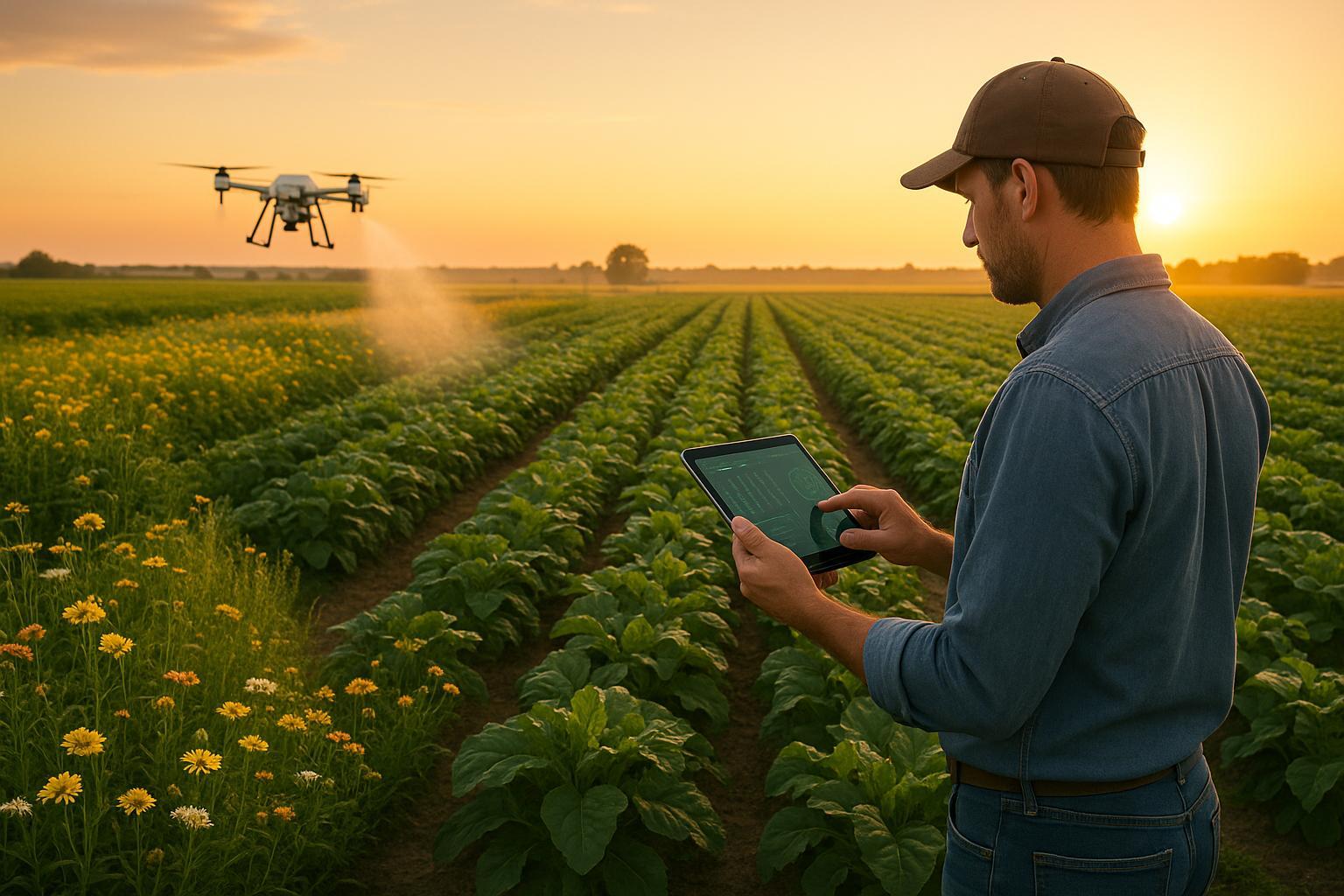
AI in Pest Control: Biological and Chemical Integration
Explore how AI is revolutionizing pest control by integrating biological and chemical methods for more efficient, sustainable farming.
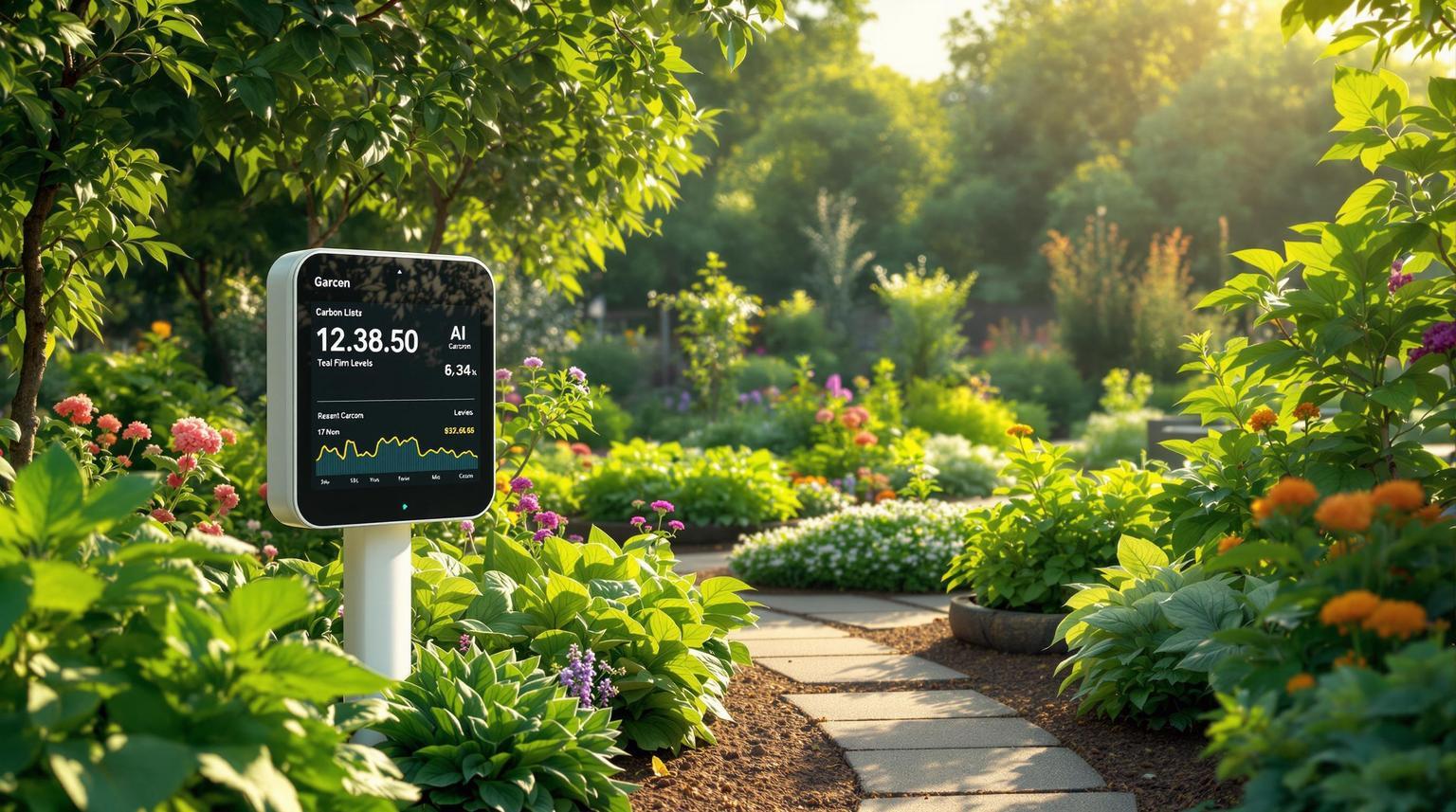
AI Tools for Carbon Sequestration in Gardens
Explore how AI tools can transform your garden into a carbon-sequestering powerhouse with smart plant selection and real-time monitoring.

Top Plants for Carbon Sequestration
Explore how selecting the right plants for your garden can enhance carbon sequestration, support local ecosystems, and promote sustainability.
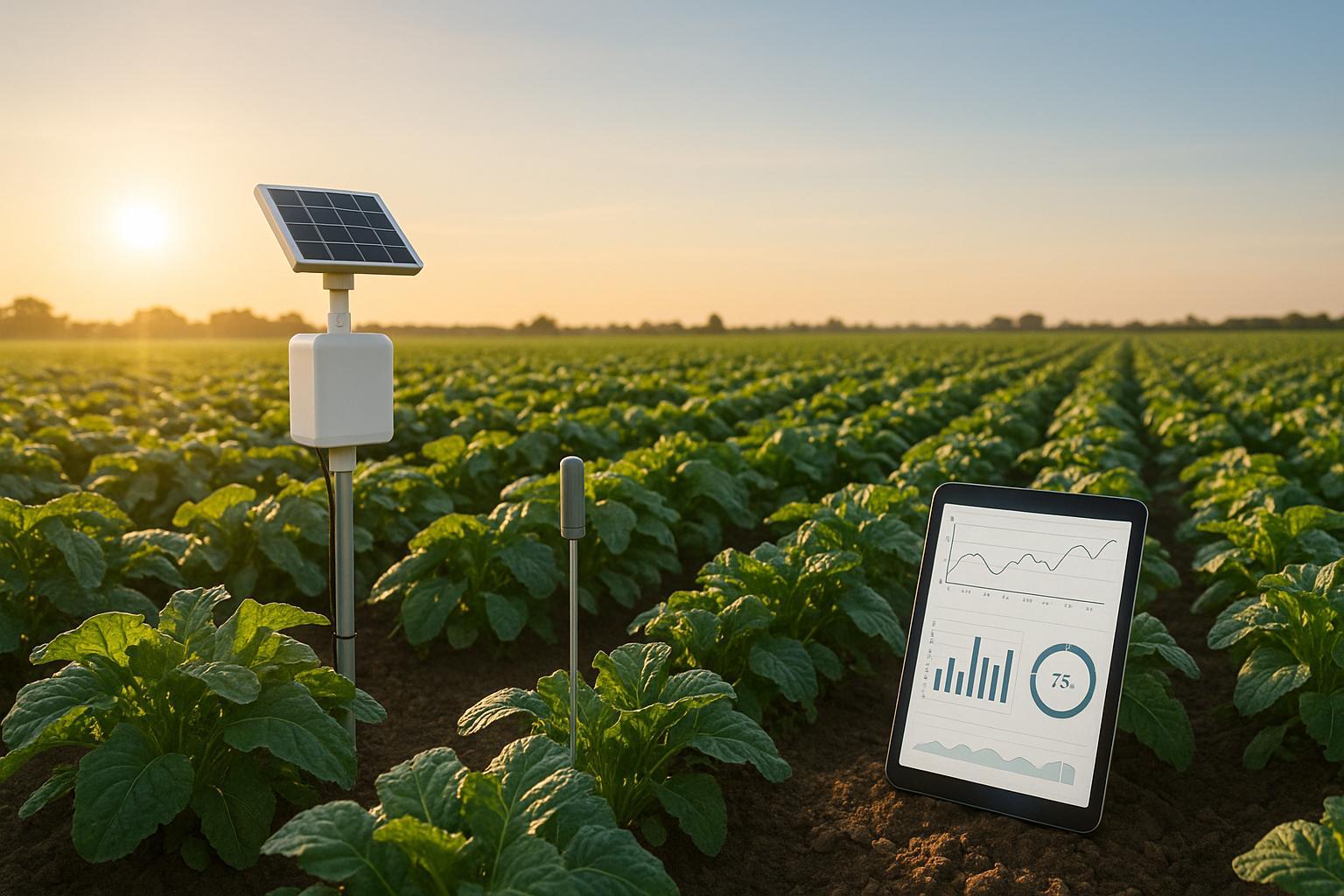
AI vs IoT: Which Drives Better Plant Growth Predictions?
Explore how AI and IoT are revolutionizing agriculture by enhancing plant growth predictions through real-time data and advanced analytics.
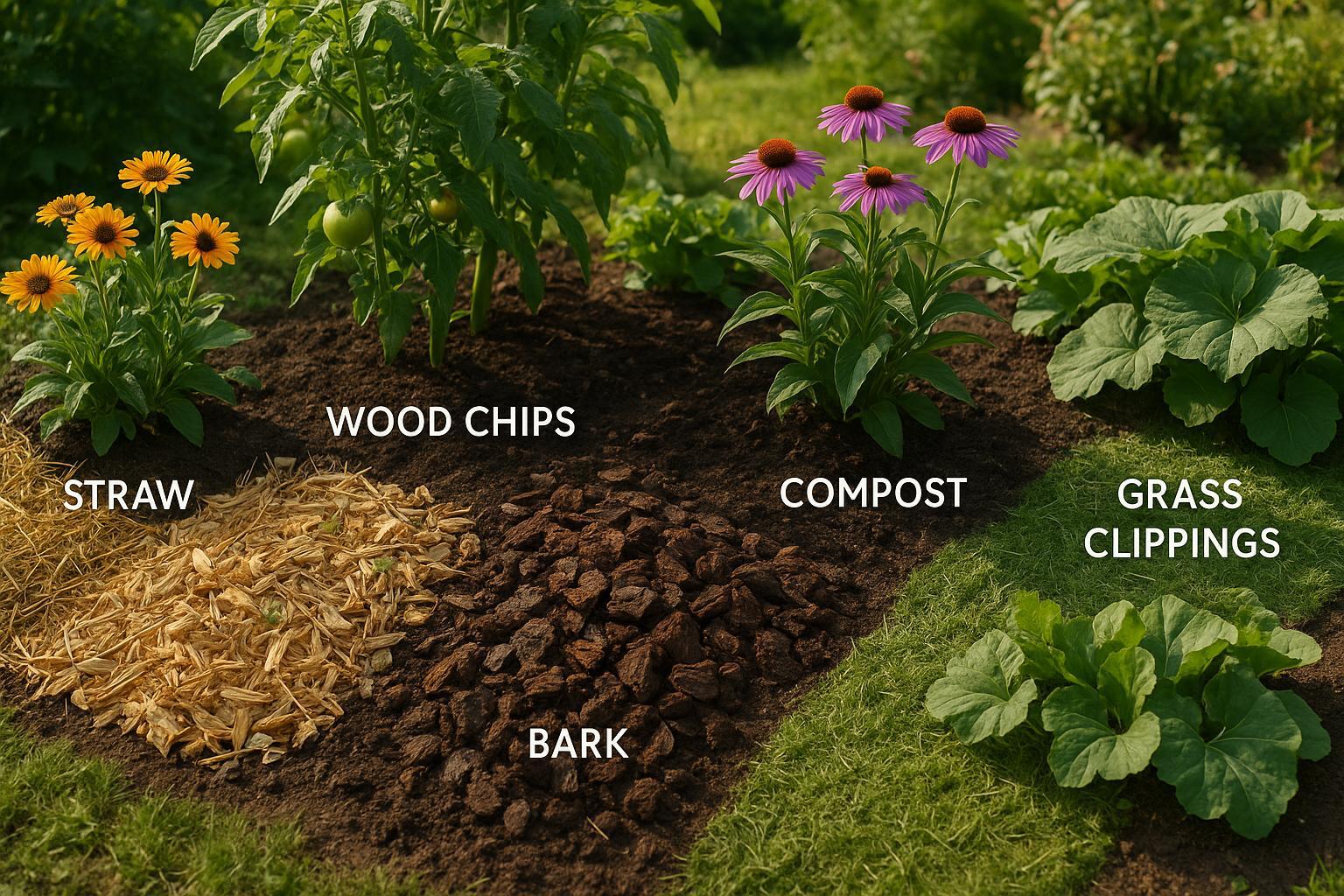
Top 5 Mulch Types for Sustainable Gardening
Explore the top 5 eco-friendly mulch types that enhance garden health, support plants, and promote sustainable gardening practices.